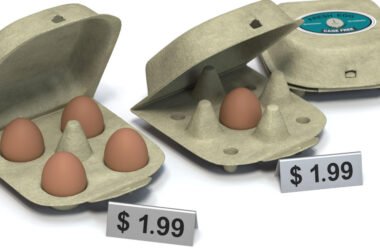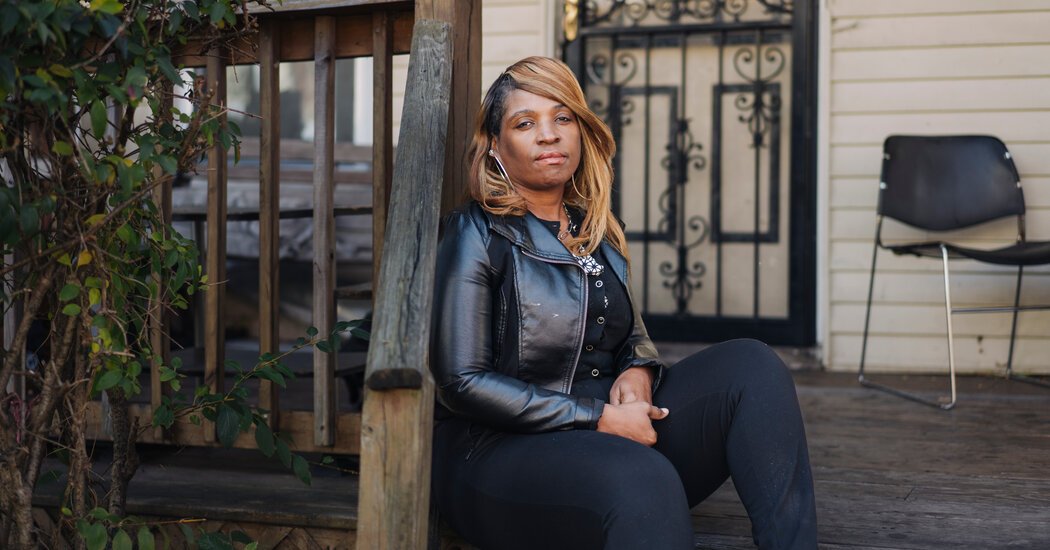Cindy Camp is one among many Individuals going through rising utility prices. Ms. Camp, who lives in Baltimore with three members of the family, stated her fuel and electrical payments stored “going up and up” — reaching as excessive as $900 a month. Her household has tried to make use of much less scorching water by doing fewer a great deal of laundry, and she or he now eats extra quick meals to avoid wasting on grocery payments.
Ms. Camp want to lower your expenses on vitality payments by transitioning to extra energy-efficient home equipment like a warmth pump and photo voltaic panels. However she merely can’t afford it.
“It’s a wrestle for me to even preserve meals,” Ms. Camp stated.
Energy payments have been rising nationwide, and in Baltimore, electrical energy charges have increased almost 30 percent during the last decade, in accordance with information from the Bureau of Labor Statistics. Whereas clear vitality techniques and extra environment friendly home equipment might assist low-income households mitigate a few of these will increase, many face limitations attempting to realize entry to these merchandise.
Low-income households have been slower to adopt clean energy as a result of they usually lack sufficient savings or have low credit score scores, which might impede their ability to finance projects. Some have additionally discovered it tough to navigate federal and state packages that may make installations extra reasonably priced, and lots of are renters who can’t make upgrades themselves.
Vitality prices have historically been a much bigger burden for low-income households, which usually spend a far bigger share of their gross revenue on utility payments than higher-earning households, according to the Energy Department. Many additionally stay in older, much less environment friendly houses, which might result in more expensive utility bills. In 2020, 34 million U.S. households, or 27 % of all households, reported problem paying their vitality payments or stored their houses at an unsafe temperature due to vitality value issues, according to the Energy Information Administration.
The Biden administration has deployed a set of packages to attempt to enhance entry to wash vitality and lower household utility bills. The efforts are a part of a broader push to cut back carbon emissions in response to local weather change, which frequently disproportionately affects deprived communities.
That features rebates for energy-efficient home equipment and tax credit for purchases of photo voltaic panels and electrical vehicles. In current months, administration officers have awarded funding for energy efficiency upgrades at federally backed housing properties. The federal authorities may even supply bonus tax credits for clear vitality investments in low-income areas and supply billions to increase access to residential photo voltaic.
In remarks on Wednesday in regards to the administration’s efforts to make vitality extra reasonably priced, Treasury Secretary Janet L. Yellen stated the insurance policies might assist cut back vitality payments for lower- and middle-income households “instantly.” She stated they had been additionally bolstering home clear vitality manufacturing, which might decrease prices over time.
“It will make clear vitality much more reasonably priced for American customers,” Ms. Yellen stated at a neighborhood school in Boston.
Nonetheless, some advocates stated it might be a problem for the administration’s investments to achieve low-income communities.
“To me the issues for people in Baltimore and interior cities in every single place, they’re equivalent: ‘We wrestle to pay our payments now,’” stated Kristal Hartsfield, the chief government of the Nationwide Alliance for Fairness in Vitality and Infrastructure, which connects communities and corporations on points associated to modifications within the vitality sector. “We are able to’t flip the change to wash vitality tomorrow.”
Though White Home officers stated they had been offering technical help to assist folks acquire entry to new packages, many who need to make the most of federal and state packages stated they usually confronted a significant hurdle: paperwork.
Ms. Camp, 56, lives in a single-family dwelling in a Northeast Baltimore neighborhood, the place she has by no means seen a photo voltaic panel on a house or residents with electrical automobiles. Nonetheless, she desires solar energy and a warmth pump — if she might navigate via the depths of the appliance course of.
“It’s actually discouraging,” stated Ms. Camp, an AmeriCorps member. “The purple tape is so thick.”
Patricia Johnson, 68, a retired machine operator who lives together with her husband in East Baltimore, stated her dwelling’s heater was greater than twenty years outdated and in want of restore, however she couldn’t afford to pay $10,000 to $15,000 to interchange the system.
Ms. Johnson stated she discovered it tough to determine which help packages she certified for, so she went to a close-by neighborhood middle run by GEDCO, a neighborhood nonprofit. Ms. Johnson later realized she certified for a state program that funds vitality effectivity upgrades, however it was nonetheless tough to navigate the paperwork and she or he wouldn’t have utilized with out steerage.
Laurel Peltier, the chair of the Maryland Vitality Advocates Coalition and a volunteer at GEDCO who labored with Ms. Johnson, stated the general public she assisted didn’t have computer systems or printers, which made it more durable for them to use for and find out about obtainable packages.
“Authorities companies have plenty of work to do in distributing packages to low-income folks successfully,” Ms. Peltier stated.
The nation’s largest municipal utility, the Los Angeles Division of Water and Energy; the Nationwide Renewable Vitality Laboratory; and the College of California, Los Angeles, lately launched the primary complete research of a few of the impacts of the vitality transition on low-wealth customers. The research highlighted rising disparities in Los Angeles between those that can afford clear vitality upgrades and those that can’t.
A part of the fact, as Los Angeles acknowledged in its research and as some vitality consultants have argued, is that there’s a want to teach the general public about vitality points in addition to how you can transfer to wash vitality applied sciences and discover the obtainable incentives.
Specialists on the Nationwide Renewable Vitality Laboratory say the vitality transition would require broad participation from utilities and energy suppliers in addition to low-income and wealthier Individuals. Which means extra will must be carried out to incorporate those that can least afford it.
Whereas lots of the new rebates are beneficiant, they nonetheless may not cowl the complete price ticket of fresh vitality merchandise, stated Diana Hernandez, an affiliate professor of sociomedical sciences and a co-director of the Vitality Alternative Lab on the Columbia Middle on World Vitality Coverage. The price of warmth pumps, which might warmth and funky houses extra effectively than typical furnaces and air-conditioners, varies however a median set up prices $16,000. The brand new rebates, which aren’t but obtainable, would solely shave as much as $8,000 off these techniques.
Tax credit can cover 30 percent of the price of putting in photo voltaic panels. However many individuals with low incomes don’t owe sufficient in taxes to take full benefit of them, and the common value of a residential photo voltaic system is roughly $25,000, in accordance with the Photo voltaic Vitality Industries Affiliation.
Low-income households are much less more likely to make these upgrades if they’re already struggling to afford needed bills, and lots of are additionally renters who will discover it more durable to profit from the brand new packages as a result of landlords may not be incentivized to make effectivity upgrades, Ms. Hernandez stated.
She famous, nevertheless, that individuals might subscribe to a portion of vitality generated by “neighborhood photo voltaic” initiatives, that are off-site photo voltaic techniques, or lease panels.
After conducting its research, Los Angeles elevated its rebates for used electrical automobiles to as a lot as $4,000 from a most of $2,500 for certified customers. And town stated it might construct and function its personal fast-charging community in low-income communities.
With out such efforts, consultants say the vitality transition will solely work towards those that can least afford to take part in it.
“This vitality transition, we’re nonetheless within the means of attempting to determine it out,” stated Stephanie Pincetl, a professor on the U.C.L.A. Institute of the Surroundings and Sustainability and the director of the college’s California Middle for Sustainable Communities who participated within the Los Angeles research. “We have now to do that proper or it’s simply going to worsen inequality.”








